Microsoft Surface Pro Review
by Anand Lal Shimpi on February 5, 2013 9:00 PM ESTDisplay: Awesome if Calibrated
Surface RT used a 10.6-inch 1366 x 768 display, for Surface Pro Microsoft integrated a full 1920 x 1080 panel of the same size. The increase in resolution is appreciable and you definitely notice it when switching between the two Surface models. Pixel density isn’t class leading, but it’s at least in the right range. On the desktop, Microsoft enables 150% DPI scaling by default which makes everything legible but still a bit odd in applications that don't deal well with fractional DPI scaling. Ideally I would've liked to have seen a clean doubling to avoid this mess.
The higher res display just makes everything sharper in the modern UI, and the 150% DPI scaling in desktop mode makes everything big enough where the higher res isn't a problem there. It's only in those desktop applications that don't properly implement Windows DPI scaling where the higher resolution is a hindrance. I actually ran into this problem using Chrome on the desktop, where my taps wouldn't always map to the right parts of the application (not to mention that Chrome in DPI scaled Windows looks terrible). Thankfully there is always the pen...
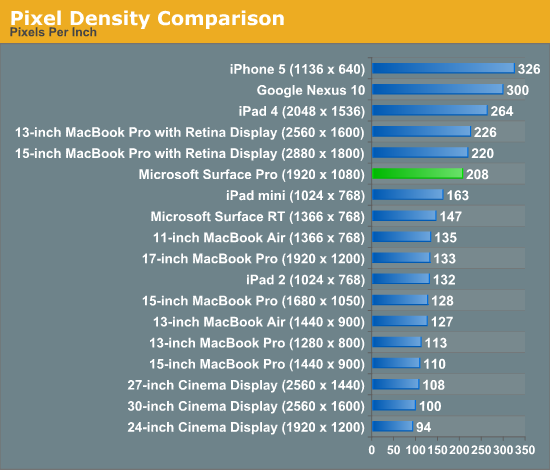
Once again Microsoft doesn’t do any substantial color calibration at the factory, but unlike on Surface RT you can run your own Windows display calibration software on Surface Pro to improve color accuracy if you have the right equipment.
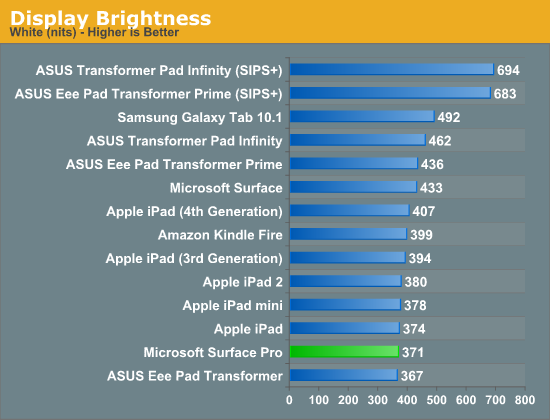
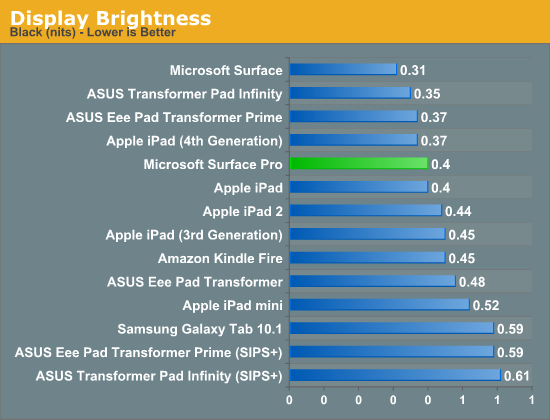
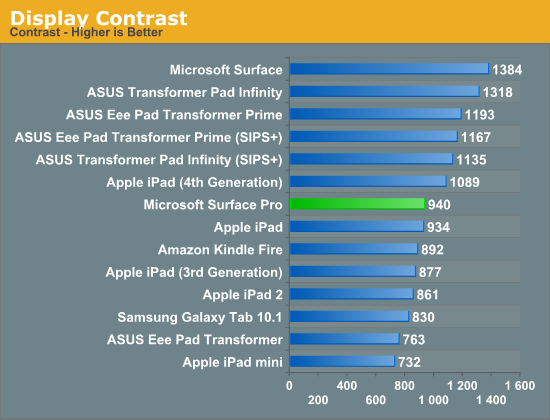
Out of the box my Surface Pro sample had an unusually high white point (~7500K), which negatively impacted its grayscale accuracy. To evaluate color accuracy I turned to our own Chris Heinonen's CalMAN smartphone/tablet workflow. Color accuracy is near identical to Surface RT, which is to say that it’s ok compared to PC notebooks from a couple of years ago but still far behind what you get out of the box from Apple.
Given that the majority of users don’t do any color calibration on their PCs, this becomes a real problem for consumer perception if your tablet doesn’t ship with accurate colors by default.
To see what the panel is capable of I ran it through our standard PC display calibration routine (which I can do since it’s running Windows 8 and is effectively a PC). I then re-ran it through our CalMAN smartphone/tablet workflow and ended up with much more pleasing results. While the display still lagged behind the iPad in one of the tests, it bested Apple’s Retina Display in the other two color accuracy benchmarks.
We'll start off by looking at the calibrated white point for these tablets. What you're looking for here is a number close to 6500K:
The next three charts look at accuracy represented as a difference between various source colors and what's reproduced on the display. The results are presented as average dE2000, with lower numbers being better.
First up is Grayscale performance, here we're looking at the accuracy of black, white and 19 shades of gray spread in between the two extremes:
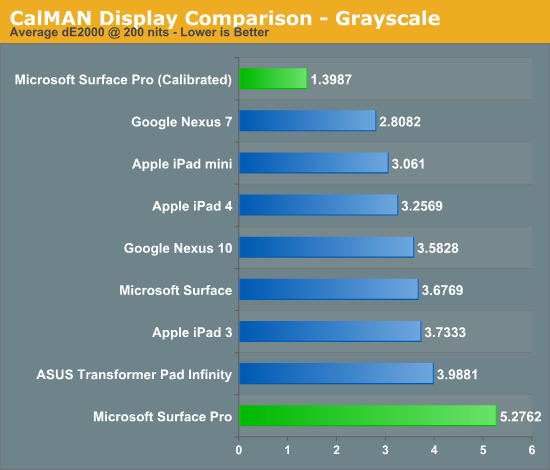
Out of the box grayscale performance is abysmal on Surface Pro. Calibrated accuracy, on the other hand, is just awesome.
First in our color accuracy tests is a saturation sweep. Here we're looking at 20%, 40%, 60%, 80% and 100% saturations of red, blue, green, magenta, yellow and cyan.
Our saturation sweep is the only test where even a calibrated Surface Pro can't match the iPad, it does do a lot better than Surface Pro without any color calibration however. Out of the box Surface Pro is considerably worse than any Apple tablet.
Gamut CIE Chart

Saturation CIE Chart
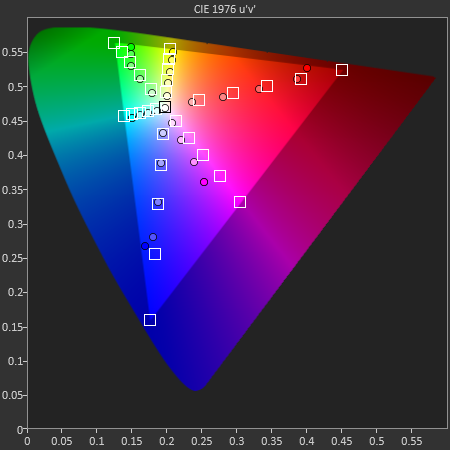
For our final accuracy test we're looking at the difference between a Gretag Macbeth colorchecker chart and the rendered swatches on these displays. Once again, lower numbers are better.
Out of the box Surface Pro and Surface RT are near identical here, and similar to the Nexus 10. With a good suite of calibration tools and supported hardware under Windows 8, Surface Pro has the potential to easily outperform the iPad if given the opportunity.
GMB Color Checker
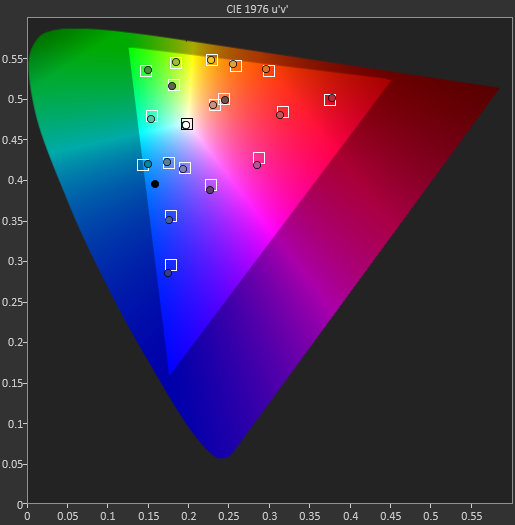
Surface Pro’s panel has real potential, it just needs a calibration pass - which is honestly something Microsoft should be doing these days, not the end user.
Mini DisplayPort but No Thunderbolt
Surface RT featured a single video output in the form of a micro HDMI port. Surface Pro adopts a mini DisplayPort output instead, and will have adapters to enable DVI and HDMI support.
The miniDP output immediately activates as soon as you plug a display into it. I sometimes had issues with display resolutions being set sub optimally, but generally speaking the process was as plug and play as you can get.
I did notice some visual tearing on the Surface Pro display when connected to an external HDMI monitor, similar to what I saw with Surface RT but not nearly as bad. I’m beginning to think something is a bit wonky with Windows 8’s multi-monitor support. What’s interesting is I didn’t see the issue on all displays, which is more than I can say for Surface RT. Update: It looks like this is hardware related. Even if the internal and external panels have the same refresh rate, Intel's HD 4000 won't guarantee that the refreshes will happen at the same time - which is why we see tearing. The tearing should only be present in clone mode, not extended desktop (I'll verify this shortly). It seems like Tegra 3 is worse in this regard, which is why the issue was so much more prevalent on Surface RT. I need to check other Ivy Bridge platforms and under OS X to see if the problem is as prevalent there as well.
The only disappointment here is Microsoft opted against integrating Thunderbolt into Surface Pro. I feel like Thunderbolt would’ve made a ton of sense in a device like Surface Pro, enabling one cable connection to both an external display and high-speed external storage. Given that Thunderbolt adoption remains fairly limited in the PC space I don’t think this is a huge loss for most of Microsoft’s target customer base, but I do feel like it’d be a good way of future proofing the device. The alternative that Surface Pro offers is the combination of miniDP and USB 3.0, which realistically speaking is probably good enough for most users. From a cost of integration standpoint vs. the number of users who would pay for it, it probably didn’t make sense for Microsoft to include Thunderbolt in Surface Pro, but that doesn’t change the fact that I wish it was there. It’d be nice for Apple not to be the only company really pushing Thunderbolt.
Camera Quality
Surface Pro, like Surface RT before it, features two integrated 720p cameras with no flash. Admittedly I didn't spend a ton of time taking photos with Surface Pro but imaging quality is just really bad compared to what you'll get out of an iPad 4. The results are borderline ok for use on the web but that's pretty much it, and forget about decent low light performance.


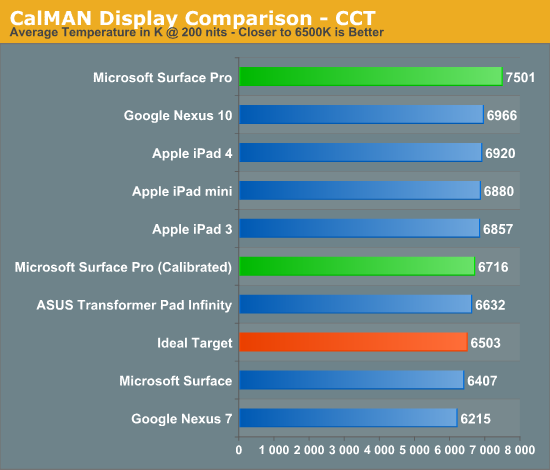
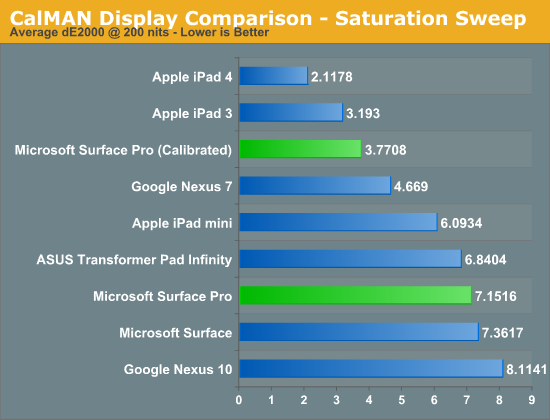
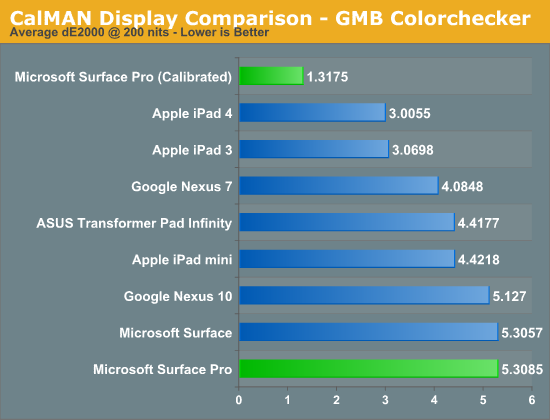










228 Comments
View All Comments
Imaginer - Saturday, March 30, 2013 - link
http://www.youtube.com/watch?v=VvR_3OTxs8A# at 3 minutes in.That is the reason I detest bricks that have the prongs in them versus a cord.
rwei - Wednesday, February 6, 2013 - link
One item that I think would be helpful in the Win8 convertible reviews is an overview of what is out there and what is coming - and your views on them.Particularly with all the different solutions being implemented to "how do I make a convertible tablet/laptop?", it would be useful to let users know what their options are and will be.
For example, I saw a picture of the Thinkpad Helix a few days ago and was overcome with happiness since that speaks to my particular use cases. Off the top of my head I can also think of:
- XPS 2 (rotating screen)
- Thinkpad Yoga (360 degree keyboard)
- Vaio 12 (slider)
- Aspire S7 (180 degree keyboard)
- Another one (Fujitsu?) that was just really confusing...
But then I read a disturbingly large amount of tech news. I'm pretty sure many others would find an overview like this interesting.
Tams80 - Friday, February 8, 2013 - link
There are three Fujitsu types:Slate: Q572
Dock: Q702
Convertible (swivel): T902, T732
Montevale - Wednesday, February 6, 2013 - link
So how about the PEN???
How about letting us know if the pen is accurate?
Is it as responsive on the edges of the screen as it is in the middle of the screen?
What if the screen is rotated?
What if it is used by a leftie?
Does the cursor shift if the pen is tilted?
Does calibration of the pen make any difference?
Pen support is natively built into the OS in Windows and unlike the S-Pen on the android there is no need for the special app support.
Handwritten notes in MS OneNote are actually searchable by default.
You can annotate Word and Excel native files add drawings in Outlook to the typed emails as your own annotations and mix text and drawings together.
For the first time a windows device is truly portable with a Pen!!!
JimTC - Wednesday, February 6, 2013 - link
Ditto! Those are the issues that are the tipping point for me.JimTC - Wednesday, February 6, 2013 - link
I've been waiting with baited breath for what feels like ages for something like this - thank you, well done!Now - I only wish I could find as comprehensive a review on how this handles One Note so that I can really know if I can finally go truly paperless (including design notes, diagrams, calc's, meeting minutes, etc, etc.). If this machine (and software) can do it, I'll be one very happy camper!
Thanks again! - fresh air!
darwinosx - Wednesday, February 6, 2013 - link
I disagree with Anand which is rare. I think this device is a very poor tablet and laptop and will not sell.althaz - Thursday, February 7, 2013 - link
It's not a good laptop (it's better than a laptop for what I want though), but it's a brilliant portable computer and a very fast, very nice to use tablet (wouldn't say it's a good tablet for most folks, as the battery life is poor and the weight will be an issue for most).For me it's the best device on the market. It's a portable desktop, it's a drawing tablet, it's a powerful tablet and it's going to be fantastic for playing football manager on the train.
I for SURE would prefer a version with half the weight, double the battery life and triple the graphics performance for under $500, but seeing as there's nothing on the market that can match the Surface Pro at anything like the same price point, I'm getting one. The closest I've tried is Samsung's Ativ, which is $300 more and has no support for a pen as well as not being as high quality.
When this becomes literally the perfect device (at version 3 or 4 most likely), then I'll upgrade and give this bad-boy away. But until then, this is the best there is for those that DON'T WANT A LAPTOP. I've got a laptop. It's useless to me. It's too bulky to use comfortably on the train or couch and the attached keyboard is annoying when I'm using it as a moveable desktop.
Lonyo - Thursday, February 7, 2013 - link
The Samsung Ativ Pro has pen support. It comes with one which docks to the body. Which is pressure sensitive (not sure how many levels).ananduser - Thursday, February 7, 2013 - link
Can I ask you an honest question ? Would you have ever been interested in the Surface otherwise(for instance with better battery life) ?I'm asking since I've read AppleInsider and read your posts there(and melgross'). Would you have purchased anything else other than Apple hardware and abandoned OSX ?